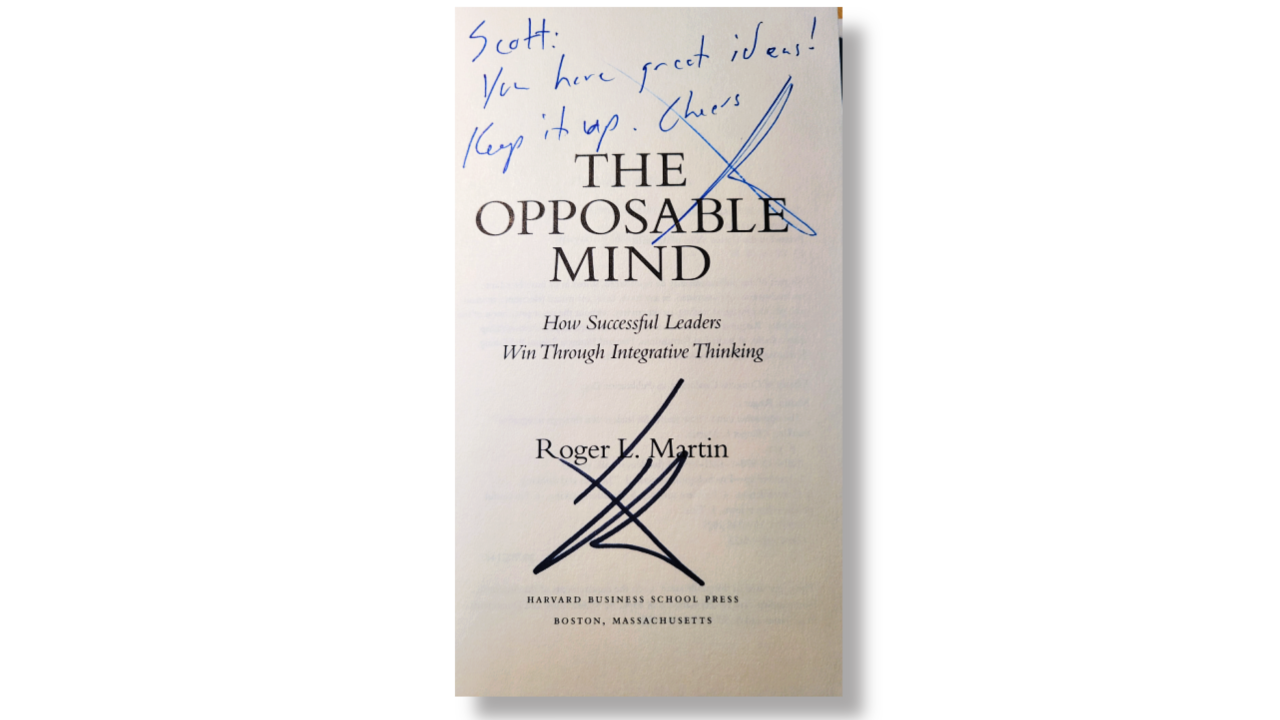Leverage the Power of Inquiry


Whether your board serves a non-profit that competes for funding or a business that competes for market share, having a sustainable competitive advantage continues to be the holy grail.
Your competitive advantage is what you do better than anyone else. If you’re lucky, you could have more than one such advantage. The ‘sustainable’ part of the phrase refers to the ability to continue doing those things better than anyone else over the long term.
Does the board of directors have a strategic role in helping competitive advantage be sustainable?
Given today’s state of constant change, as well as the ever-evolving demands put on board directors to stay current with stakeholder feedback and shareholder priorities, I believe savvy directors have a role to play in helping sustain their organization’s competitive advantage. One way of doing so is to help the organization avoid the risk of being self-satisfied with its current level of success.
The Nature of Competitive Advantage
When it comes to sustainable competitive advantages, look for two traits: they are unique to your organization and valuable to your customers — or your funders, in the case of non-profits. Having only one of these traits is not a competitive advantage. What good is having a unique strength that has no value in the marketplace?
Famed investor Warren Buffet has often said he prefers to invest in companies with a sustainable competitive advantage that’s like a moat surrounding a castle, keeping intruders (competitors) out.
That may have been a useful metaphor at one time — for example, think of Microsoft’s DOS operating system. But, in today’s rapidly changing world, is sustainable competitive advantage still like a moat? Or has it evolved into something else?
I’ve recently been re-introduced to the thinking of Professor Roger Martin - writer, strategy advisor, former Dean of the Rotman Business School at the University of Toronto, and in 2017 named the #1 management thinker in the world. I’m inclined to agree with his view that, when it comes to sustainable competitive advantage, the key competency to be developed is the ability to ask the right strategy questions that emerge from data collected from customers, funders, or stakeholders. It’s a process that never stops – or at least it should be.
BTW – I still like the guy because he once said I had good ideas. Let’s not hold that against him!

In a recent article published in Medium, Roger Martin argues that competitive advantage must evolve for the organization to stay ahead. Furthermore, Martin respectfully says that Warren Buffet’s moat metaphor is too stable — not nearly dynamic enough to reflect today’s realities.
Using Questions to Compete
The true competitive advantage, with which your board can help the organization stay ahead of the competition and thrive into the future, is the ability to ask questions that provide clues as to what the next set of questions needs to be.
In my view, the creation of a culture of inquiry is a collaborative effort between the board and management — “when the wise people get together with the smart people.”
Let’s explore this premise.
The questions you ask today, and the work to follow, provide answers that lead to a hypothesis for the future. Of course, they also lead to the next set of questions to test and determine your next strategic move.
Here’s the caution — If your competitors have already done this work and are ahead of you, there’s even more work for you to do to get back in the game.
To mitigate this risk, you want your board to cultivate a culture of inquiry that keeps your organization two steps ahead of the competition. One key success factor to creating this kind of culture is carving out enough time for meaningful dialogue during board meetings or retreats.
Here are a few examples where the power of inquiry helped an organization stay ahead of the competition:
- Proctor & Gamble (P&G), the makers of Tide laundry detergent, proactively asked questions and developed a hypothesis about a way to dispense soap that would be more convenient than a pourable bottle of liquid detergent. Without P&G’s culture of inquiry, the very profitable Tide Pods might never have come along when they did. P&G stayed ahead of the competition by talking to their customers.
- Board directors of a hospital foundation with an annual fundraising campaign started asking how to excite the donor base — more specifically those who wouldn’t normally donate to fund public health care. The result was a continuing series of high-ticket lotteries with millions in prizes that would far exceed traditional fundraising efforts - including those of community charities competing for the same dollars.
- In the days when Netflix was shipping DVDs to customers’ homes and systematically putting video stores out of business, how did they know low-price streaming services would be the next big thing? They didn’t. They asked key questions of their customers even when the current business was doing well. The answers sparked a new hypothesis to be tested with the next round of questions. Streaming services became the next Netflix innovation, and they had the market to themselves for a few years. Now that streaming services are proliferating, Netflix has responded with original content and new pricing models. Will it be enough? What are the next questions to be asked?
Get the Questions Advantage
As Roger Martin points out in his article, “What Strategy Questions Are You Asking?”, competitive advantage isn’t a data advantage, it’s a questions advantage.
Only when you have great questions can you get great answers. And those answers allow you to form a hypothesis that can be tested with yet more questions.
That’s the real sustainable competitive advantage – the discipline to ask curious questions that produce answers or clues for the next set of questions. And the best part? Your competitors aren’t there yet.
“The advantage of being ahead is a renewable resource.” — Roger Martin
While Martin’s advice to foster competitive advantage with non-stop Q&A is aimed at CEOs, I think he’d agree that boards of directors also need to fulfill a high level foresight role so they can support management’s efforts.
Asking the right questions to identify a competitive advantage is a competency that the board of any organization – no matter the size, type, or sector - can develop with its management team.
What’s Your Next Right Move?
Boards that make the best decisions have curious directors who avoid being self-satisfied. That’s what the six habits in the Savvy Director Framework are all about.
For you, the next right move might be to collaborate with your board chair to prioritize this kind of strategic discussion by using the most affordable tool available – the strategic board agenda. Determine the strategic questions that need to be asked in the current competitive situation. And leave enough space on the agenda to reflect on the answers.
The savvy director’s role in the process includes asking generative or catalytic questions that prompt insights and exploration into areas not yet thought of. Such questions can address areas such as:
- What the organization understands about the market where it competes.
- The customers/citizens it serves.
- The technology it uses.
- The competitors it faces.
- The industry or community in which it operates.
This allows management to respond to the board’s questions, leading to more insights and setting up the next round of questions to explore.

The true competitive advantage isn’t a moat. Instead, it resides in asking and answering the questions your competitors should be asking.
In the Resources section at the end of this article, Benjamin Wann has an interesting list of questions to better understand what your customers may want next, including strategic questions for:
- Improved customer service.
- Solving problems.
- Improved products or services.
- Understanding customers’ needs.
- Marketing improvement and customer analysis.
- Understanding the purchasing experience.
- Evaluating employees.
Let’s wrap things up with these practitioner insights from Roger Martin:
“Be very deliberate about the questions you ask about your business. Invest heavily in the activity. Never just do. Do and reflect. Ask yourself, how can I ask more sophisticated questions about my business? Is it by interacting more with customers? Is it by being more systematic about the data that we collect about them? Is it by hanging out with technologists working in my industry? Is it by paying attention to anomalies? Rather than dismissing anomalies because they are anomalous, ask: how can I think about this anomaly as a leading indicator, not a one off?”
Your takeaways:
- Avoid the risk of being self-satisfied.
- Ask questions of your business or non-profit before your competitor does.
- Reflect on the answers to generate the hypothesis for your next right move and the questions to test it.
- Think about competitive advantage as ever-evolving, not as a static moat.
- Asking a lot of questions unlocks learning and improves interpersonal bonding on the board.
- Allow sufficient time on a future meeting agenda or board retreat to frame the necessary deep, strategic discussions.
Resources:
- What Strategy Questions Are You Asking? Roger Martin. Medium. June 2023.
- Strategic Questions to Ask Customers for Better Understanding. Benjamin Wann. December 2022.
- The Surprising Power of Questions. Alison Wood Brooks and Leslie K. John. Harvard Business Review. May-June 2018.
- Curiosity Makes the Director. Scott Baldwin. The Savvy Director. July 2021.
- The Power of Catalytic Questions. Scott Baldwin. The Savvy Director. January 2021.
- Sustainable Competitive Advantages. Erica Olsen. On Strategy. February 2022.
Thank you.
Scott
Scott Baldwin is a certified corporate director (ICD.D) and co-founder of DirectorPrep.com – an online hub with hundreds of guideline questions and resources to help directors prepare for their board role.
We Value Your Feedback: Share your suggestions for future Savvy Director topics.
Comment



